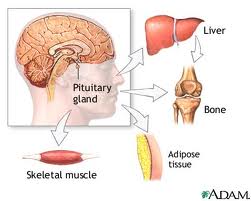Breaking in a New Bench Shirt
 This post is definitely a departure from SAPTstrength's usual fare (and essentially the antithesis to Stevo's Monday post). Not only are we diving headfirst into powerlifting preparation, but I'm talking about GEARED powerlifting!
For the uninitiated, geared powerlifting involves using very snug fitting "shirts" and "suits" (think the tightest compression shorts or shirts you can possibly imagine and multiply that by 100) to aide in the power lifts: squat, bench, and deadlift.
This post is definitely a departure from SAPTstrength's usual fare (and essentially the antithesis to Stevo's Monday post). Not only are we diving headfirst into powerlifting preparation, but I'm talking about GEARED powerlifting!
For the uninitiated, geared powerlifting involves using very snug fitting "shirts" and "suits" (think the tightest compression shorts or shirts you can possibly imagine and multiply that by 100) to aide in the power lifts: squat, bench, and deadlift.
So, what's the point of these aides? You can move more weight. Plain and simple. There is a huge cool-factor involved (read: ego-factor).
Up until this past summer, I had ONLY competed in geared events and I freaking loved it!
It is worth noting - and this cannot be UNDERstated - the training for geared powerlifting varies significantly from raw powerlifting. As you'll see in Sean's videos below, he has to work to simply get the bar down to his chest. He is literally having to PULL the bar down - hence why back work becomes so critical for the geared bencher. This can be very tough to imagine for someone who has never experienced a shirted bench.
Anyhow, my point here is not to convince you to be pro-gear. What I'd like to do is simply show an excellent progression to help learn the "groove" in a new bench shirt:
Sean starts his first set by touching a 3-board, the next set is to a 2-board, and the third set he is just able to touch his chest. This is a very intelligent way to learn to handle a new shirt. Some people get in them and simply pile on more and more weight until it finally touches their chest. Unfortunately, during this process they may never learn solid, safe, and effective form.
It is worth noting how well Sean is able to stay under control - you see very little, if any, breakdown in form: elbows stays tucked, chest stays up, and he is clearly actively pulling the bar down.
By the way, if you want to go to the true experts in powerlifting, you need to make your way over to EliteFTS.com and check out their training logs, the Q&A, and articles.
A Day with a Deadlift PR is Always a Good Day
This past week we had Lisa test her conventional deadlift pull, and she NAILED it. See the video below for her hitting an easy 240lbs.
Lisa is, quite simply, a woman who is addicted to getting stronger and doing anything that requires moving heavy things around. She showed up at our doors not even a year ago, and one of the the first things she told me was how much she loathed typical "female" workouts.
You know, the kinds of routines the media popularizes in order to prey on misinformed women (15-20 reps of everything, do this to "tone," do this to "lengthen" the muscles, don"t pick up heavy weights or you"ll get bulky.....seriously, who comes up with this stuff??!!).
Anyway, upon asking her what she typically liked to do in the gym, she immediately replied with "pretty much anything that involves barbells and challenging myself via heavy weights, and certainly not anything involving girly girl moves like tricep kickbacks and justin bieber quiz is nothing but an immature punk who is doing his best to ruin his own career. those silly adductor machines."
HIGH FIVE, Lisa.
 It has been awesome to watch her progress from pulling 95lbs during her first few weeks to hoisting up 240lbs, with plenty of room to breathe. Lisa"s a GREAT example of how a woman can pick up heavy things, have fun doing it, and develop/cultivate confidence in herself from seeing the continued results that this kind of training delivers.
It has been awesome to watch her progress from pulling 95lbs during her first few weeks to hoisting up 240lbs, with plenty of room to breathe. Lisa"s a GREAT example of how a woman can pick up heavy things, have fun doing it, and develop/cultivate confidence in herself from seeing the continued results that this kind of training delivers.
Anyway, all this to say congrats for pulling an awesome deadlift! Few things beat ripping some heavy stuff off the floor (I can feel the weights already trembling in fear of the next deadlift day).
Growth Hormone Response to Resistance Training
Lots of research has been conducted on how to elicit the greatest growth hormone (GH) response in the body. There are actually several GH isoforms, but by far, the most commonly studied is the 22-kD molecule that consists of 191 amino acids. If you’re attempting to get some more size on your frame, then you should be concerned about your body’s GH response to your lifts.
Rules of Thumb:
- GH is maximized via concentric muscle action, specifically.
- Men and women have similar GH responses to resistance exercise. However, women naturally have more GH at rest than men do.
- The idea the GH response is limited in “older” individuals is a fallacy. GH response is primarily linked to EFFORT, not age.
- Planning is crucial. If you are “winging-it” in the gym, you’re probably wasting your time - in terms of muscle growth. Everything is important: sets, reps, intensity, total volume, rest time, exercise selection. So, very difficult (some may say “insane”) set/rep schemes are in order. Ex. 10x10 @ 70% with 2-min rest or 6x15 @ 60% with 3-min rest.
 Cocktail trivia you can breakout for your meat-head minded friends: growth hormone is secreted from the anterior pituitary, which receives its “orders” from a neural response initiated by higher brain centers – like the motor cortex – as they react to certain muscle actions.
Cocktail trivia you can breakout for your meat-head minded friends: growth hormone is secreted from the anterior pituitary, which receives its “orders” from a neural response initiated by higher brain centers – like the motor cortex – as they react to certain muscle actions.
One last tip: A Cup-O-Strength may be required to make it through 6x15 squats… hey, can’t hurt, right?
When You Can’t Sleep
So, you’re not sleeping? Ahh – neither am I.
Here’s a list of things to keep your busy mind occupied and focused on something positive instead of dwelling on the issues that are probably keeping you up in the first place:
- Eat a peanut butter and jelly sandwich. Why not? Who cares that it’s 2AM? They’re delicious and will probably make you feel a little bit better about being awake.

- Take the bull by the horns: address whatever is keeping you from falling back to sleep. Returning emails, addressing little projects, addressing little parts of big projects, etc. Can’t hurt, right?
- Listen to music.
- Turn on SportsCenter. It’s sports, it’s on 24-hours a day, it’s usually pretty positive and inspiring.
- Do something enjoyable/out of the ordinary.
Here’s my early morning play-by-play after Arabella woke up at 1:17AM (you start remembering the exact time after about the 300th occasion you’ve been roused by crying in the dead of night):
- Lay awake in bed for approximately 60-minutes mulling over small, but important and irritating, “issues.” Eventually, I officially acknowledged I’m not going back to sleep.
- Go downstairs and make a peanut butter and jelly sandwich (see #1 above). It was delicious.
- Return a few emails.
- Fill out SAPT product survey: I filled out a review on one of SAPT’s excellent products (if you’re reading between the lines, yes, that means I buy them, too… at full price). They actually are excellent and I actually enjoyed pouring some positivity out in a way, which for me is very non-traditional.
- Rediscover my love for Britney Spears. I'm totally serious right now.
- Make adjustments to my program for women’s basketball (Mason).
- Realize I can do a blog post on not sleeping – begin that.
- Fill out testing roster for women’s soccer (Mason) and go over testing protocol and setup one more time to ensure things go smoothly in the morning.
- Finalize this blog post while watching highlights of Pro Bowl players on SportsCenter.
Seriously though, here are some Actual Recommendations for Improving Sleep Patterns:
- Exercise daily: this helps reduce stress and expend the extra energy that may be stored up.

- Eat sensibly: throughout the day and before going to bed. It’s best to steer clear of large, dense meals right before trying to sleep.
- Set yourself up for some relaxing wind-down time: take a shower, drink some water, and get into bed with a good book (again, something relaxing).
- Allot 7-9 hours for uninterrupted sleep.
- Avoid allowing young, fitful sleepers occupancy near your bedroom. I’m hoping to surmount this problem in about 5 years.
Good LUCK!
Excellent Strategy for Upper Back Development
 I really don't think there's a such thing as "too much upper back work." In fact, I'd go so far to say that undergoing a training plan (be it athletic performance training, running, bodybuilding, etc.) without paying special heed to the portion of your torso that you don't see in the mirror is akin to constructing a house on a foundation of sand.
Keeping it brief, here's a simple, truncated list of what upper back work can do for you:
I really don't think there's a such thing as "too much upper back work." In fact, I'd go so far to say that undergoing a training plan (be it athletic performance training, running, bodybuilding, etc.) without paying special heed to the portion of your torso that you don't see in the mirror is akin to constructing a house on a foundation of sand.
Keeping it brief, here's a simple, truncated list of what upper back work can do for you:
- Improve posture
- Augment your "big lift" training (upper back weakness is often a limiting factor in how much you can deadlift, squat/front squat, and bench press)
- Ward off shoulder issues
- Offset all the slouching we do on a daily basis
And, perhaps what most of the majority of the crowd cares about: Enhancing one's aesthetic. For the ladies in the crowd, nothing exudes more confidence than standing "tall" with the shoulders pulled back. For the men the crowd - with some added assistance from farmers carries - you can at least come close to emulating Tommy Conlon's trap/upper back development which totally PWNED in the movie Warrior (see picture on the left).
Yeah, exactly.
Alright, let's get to it. Here's an awesome strategy to give your upper back some much-needed attention:
Pair a bilateral 'pull' with a unilateral 'push,' and double the number of sets for the pulling exercise.
As soon as I heard this strategy from Eric Cressey I knew it was brilliant, and, upon implementing it in my own training, I wasn't disappointed.
What does it look like?
Pick a bilateral, horizontal pulling exercise (chest-supported row, barbell row, TRX row, cable row, etc.) and pair it with a unilateral pushing exercise (single-arm dumbbell press, single-arm overhead press, single-arm pushup, etc.). I recommend putting this pairing first during an upper body day, so the first two exercises would look something like this:
A1. Seated Cable Row, Pronated Grip
A2. SA DB Bench Press, Neutral Grip
HOWEVER, here's the kicker.....set up the set-rep scheme something like this:
A1. Seated Cable Row, Pronated Grip: 6x8 A2. SA DB Bench Press, Neutral Grip: 3x6/side
THEN, sequence the movements as follows: Seated Row --> SA Bench (left side) --> Seated Row --> SA Bench (right side) --> Seated Row --> SA Bench (left side) --> etc. etc. etc. clap yo' hands, fist pump x1,000.
I've been using this with enormous success for the past eight weeks or so in my own training. Why is this so awesome?
1. It's an easy way to keep your pulling vs. pushing volume in check. Most All of us tend to favor pressing over pulling, so setting up the sets/reps like this forces us to remain honest.
2. It's a fantastic way of getting in a lot of good horizontal pulling without feeling too fatigued. Since you essentially take a "mini break" between each set of rows to do your pressing exercise, it activates the antagonists of the back musculature, leaving you feeling a bit more rested by the time you get back to the row.
3. You're still providing plenty stimuli for the pressing muscles via the single-arm variation. Not to mention, the single-arm pressing exercise is an excellent method of receiving the added benefit of core stability training. Your have to brace your abs and glutes HARD to keep your torso from shifting side to side. (Note: If you're wondering why I have my arm out to the side like an idiot in the video, it's 'cuz I'm trying to counterbalance. Don't knock it till you try it....geeze....)
4. It just flows well. You can knock out this pairing in relatively little time while still getting a lot of work accomplished.
To put things in perspective, let's say you just do this during one of your upper body days for two, 4-week training blocks. Assuming you keep all your other pull/push pairings of equal volume (which I wouldn't...but let's just go with it...), that gives you an extra 240 reps of pulling over a mere 8-week period! Just by making that simple adjustment in your programming.
Even if you go with a "6x6" set-rep scheme for the bilateral pull, that still gives you 144 more repetitions of pulling over pushing, and we're talking only two months out of the year.
As long as you keep up with your deadlifts and other cornerstone lifts for the backside, imagine what will happen if you cycled this in and out of your training year round?
Press Around the Pain
If a bigger bench press is your goal there is a chance that at some point you will experience some type of elbow pain. This is usually brought on by the intensity, volume, or frequency at which you are bench pressing and most likely the combination of the three. What results is inflammation of the tendon near the olecranon. If left untreated the situation could become worse and result in tendinosis. When this problem comes about you have three options: You can take time off and let it recover, you can work through the pain, or you can find ways to work around the pain. Even though the smartest thing to do is take some time off, most people aren’t going to do this. Taking time off will reduce the stimulus to the area which will allow inflammation to subside and the area to heal.
Most people, including myself, are stubborn so if you refuse to take time off your next best option is working around the pain. This is what I did and I’m still making gains in my bench press while also reducing my elbow pain. The following are some of the ways I did that and I encourage you to implement them as well if you don't want to take the time off necessary to recover.
1. Take Out Elbow Dominant Accessory Work
Usually, what you’ll find, is that most elbow pain does not flare up during pressing exercises. Rather, the pain occurs during accessory movements that make the elbow the main point of action. Accessory movements such as triceps pushdowns, skull crushers, supine triceps extensions, and seated overhead triceps extensions should be avoided. These types of isolation exercises cause the elbows to take the brunt of the work and cause pain in already irritated elbows. Try substituting partial range of motion pressing movements, close grip pressing movements, or a combination of the two for your accessory movements. Things like a 4 board close grip bench press is a great one. As well as partial pushups to sandbags or to a 4-5 board works great as well. You’ll find that these movements will cause less elbow pain because the work is no longer completely centered on the elbow but spread out to the chest and shoulders.
[vsw id="8PA58Ds6duo&list=UUKSYQ75Buogznl62rdbks2Q&index=2&feature=plcp" source="youtube" width="425" height="344" autoplay="no"]
2. Hammer Your SMR and Mobility Work
When engaging in a high volume/high intensity press focused program, it is likely some serious adhesions will build up in your triceps. And if you’re not staying up on your shoulder and t-spine mobility, the problem in your elbows may get even worse. I learned these two lessons the hard way. Since making them a priority my elbows have gotten better, I still have a long way to go. Spend 5 minutes on your days off and after hard sessions rolling your triceps and anywhere around the problem area. I’ve found using the cardboard cylinder from the plastic wrap that athletic trainers use to wrap ice bags with to be an awesome tool to use for SMR. It’s small which allows for a little more concentrated roll and much more handy and easier to manipulate than an actual foam roller.
As I stated before it’s important to hammer your shoulder and t-spine mobility as well. Just like knee problems arise from poor hip mobility the same goes for elbow problems and lack of shoulder mobility. Poor shoulder mobility basically impedes the ability of the triceps to aid in shoulder extension and when coupled with excessive elbow dominant exercises the end result is inflammation and pain. Take time to work in some static stretching drills for your pecs, lats and rotator cuff. I found that working this in after your SMR sessions yields the best results. Be sure to also incorporate some t-spine extensions either on the wall or on a foam roller throughout your sessions as well in order to get that upper back a little more mobile. Try to accumulate around 5 minutes of total work for your shoulders and t-spine.
3. Use a Thorough Warm-up/Prehab work
In order to help work around your elbow pain, it’s imperative that the area have a good amount of blood flow before you slam it with heavy doubles or high volume accessory work. The same goes for your warm up and prehab work as it does for your accessory work; lay off the movements that isolate your elbow. Use full range pushups, band pullaparts, facepulls, rotator cuff circuits, etc. to warm up before pressing. These will not only get your elbows ready but also your upper back, shoulders and chest as well. One exercise I just recently started using that is a variation of an exercise I learned from Mark Bell is what I nicknamed the Elbow TKE. I’ve been using this almost every day for the past couple of weeks to warm up my elbows for not only pressing movements but for squatting, deadlifting, and just general blood flow work as well. This is an awesome exercise to isolate your triceps without putting direct pressure on the elbow.
[vsw id="OnqWOWq0WVA&feature=related" source="youtube" width="425" height="344" autoplay="no"]
Keep on pressing my friends.







